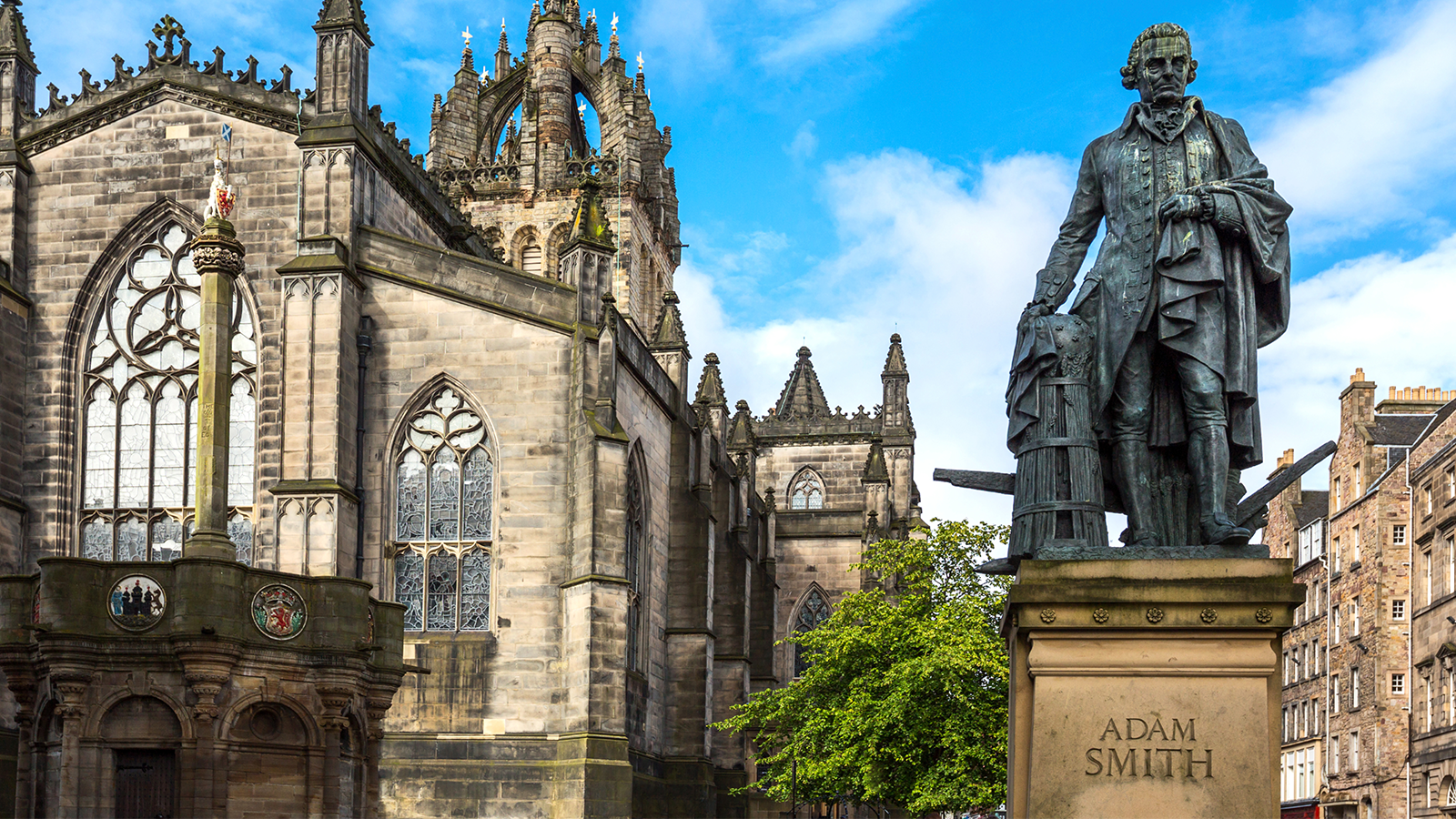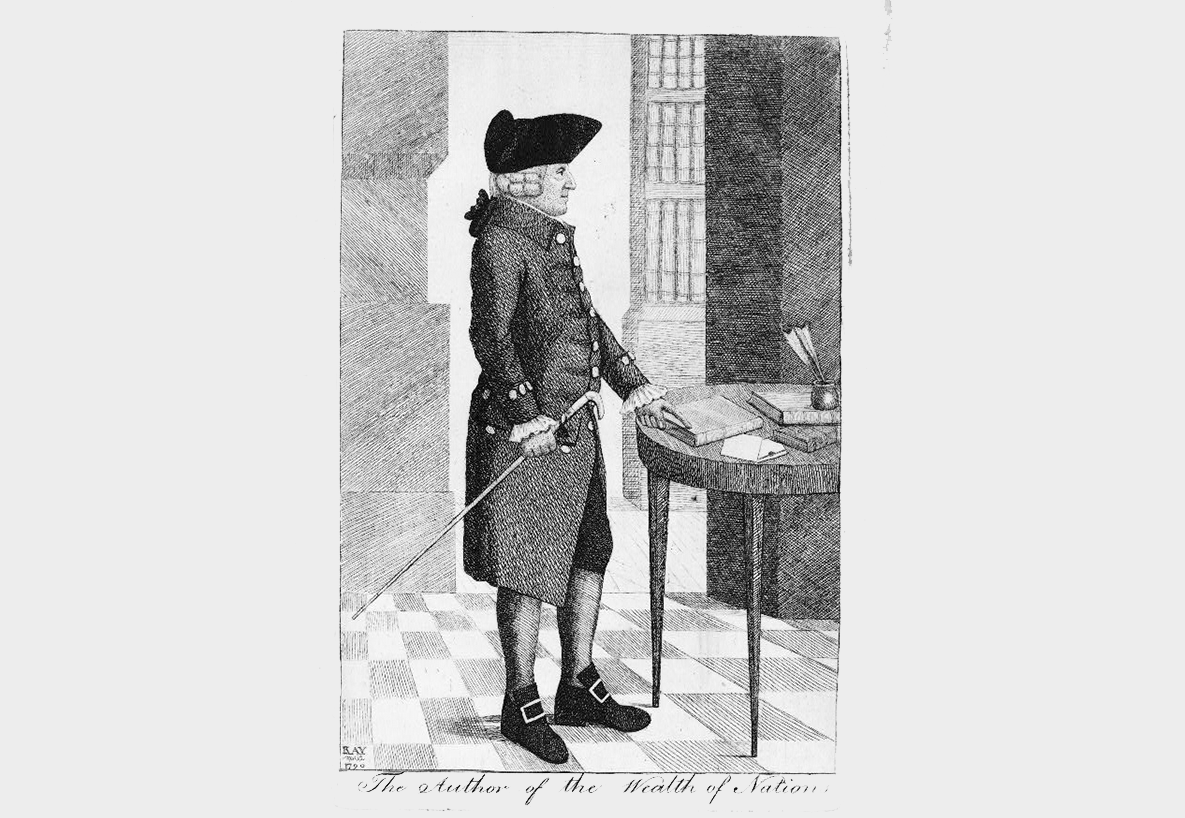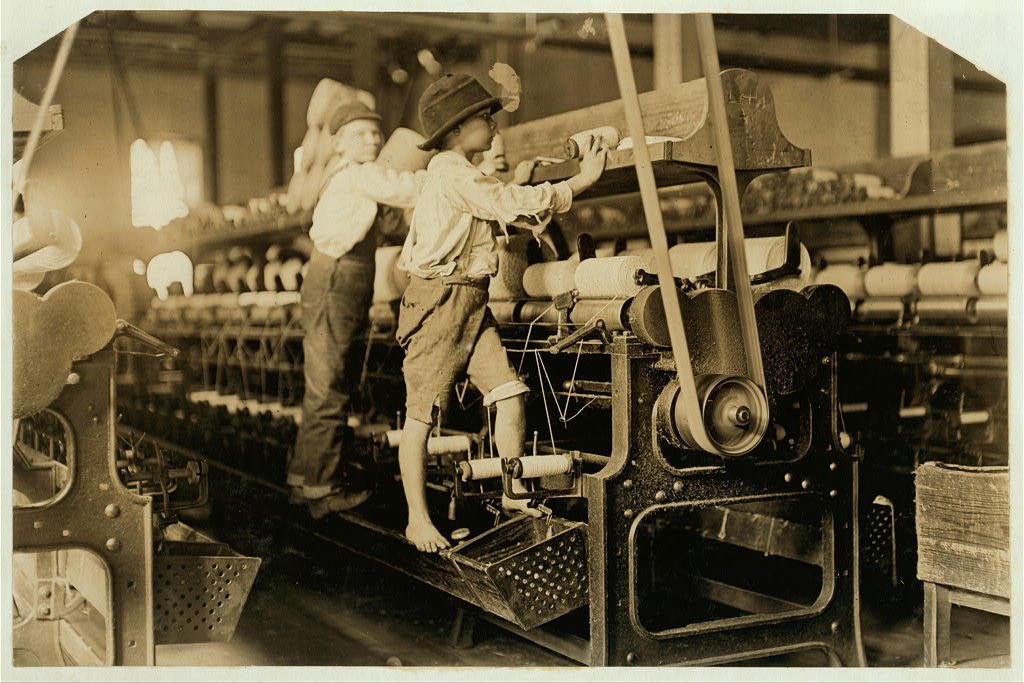
Adam Smith and his famous book The Wealth of Nations often make lists of things to know about the eighteenth century in economics and history classes. How can teachers explain his impact instead of making Smith just another factoid to memorize? Adam Smith was witness to and influenced by three major movements: the Enlightenment, the American Revolution, and the Industrial Revolution. Associate Smith’s economic thought with these larger events to make him memorable.
Adam Smith as an Enlightenment Philosopher in Search of Natural Laws
The European Enlightenment of the seventeenth and eighteenth centuries is usually associated with ideals of individual liberty, religious tolerance, and natural laws that ruled human nature. While Smith is called an economist today, in his time he was a philosopher, like the other Enlightenment thinkers who explored why humans do what they do. Contrast Smith with one of the best-known thinkers of the era, John Locke. Locke’s famous theory of the social contract held that individuals would and should consent to be ruled, giving up some rights to safeguard others for the sake of the wider society. Smith, on the other hand, believed that people were more motivated by their own economic success and prosperity; he also believed that when individual businesses prospered, everybody could prosper because more jobs would be available. In other words, the “natural law” identified by Smith was that individuals working for their own financial success are led by “an invisible hand.” Ultimately, this process promotes positive effects such as producing more goods or employing more people.

Photo: Library of Congress
Adam Smith’s Advice to Stop the American Revolution
Adam’s Smith famous work on political economics, The Wealth of Nations, was published in 1776, a memorable year because of its association with the American Revolution. Use this key date to make a connection with the British economic policy of mercantilism that angered the American colonial revolutionaries. Smith witnessed the growing tensions between Great Britain and the thirteen colonies. At the heart of that conflict was a government economic policy called mercantilism. Today we would label mercantilism as government regulation of the economy. British mercantilist policies included laws and government support of certain businesses in the form of money, tax advantages, and even government-approved monopolies. Companies importing and exporting goods from the British colonies especially profited from these government-granted advantages in the belief that this would ultimately improve the wealth of the nation.
Adam Smith criticized mercantilism and advised the British Parliament to end these regulations on the colonial economy. He argued that “free trade” would lead to a more robust economy. However, he did not believe in the complete absence of government regulation or government spending. A thriving economy required government support of “public works,” or the building of transportation networks and communication systems such as the postal service. He believed that public education should be available to everyone. And he believed in a progressive tax system in which the richer paid more taxes and the poor less.

Photo: Library of Congress
Adam Smith Witnessed the Industrial Revolution
Scotsman Adam Smith (1723–90) witnessed the beginning of the Industrial Revolution in the textile industry across Great Britain. Those famous inventions that revolutionized the textile industry, such as John Kay’s flying shuttle (1733), the spinning jenny (1764), and the opening of canals for transportation, were also changing the economy as he watched. James Watt, who first patented the steam engine (1769), was Scottish like Smith. Smith realized that the old agricultural economy was changing and land was no longer the main source of wealth. He knew that manufactured goods produced through a division of labor were the future.
While Smith described many of the elements of a capitalist economy, he did not actually use the word capitalism, which was coined after his death, in the 1830s. However, that word came to describe an economic system in which wealth (or capital, another word for wealth) was owned by individuals for their personal profit. The free market, not the government, determined the production, prices, and distribution of goods. Smith’s work became integral to a modern understanding of this new economic system.
Active Classroom can aid your classroom with hundreds of activities about Economics
Access a free trial and start engaging students today
Cynthia W. Resor is a social studies education professor and former middle and high school social studies teacher. Her dream job? Time-travel tour guide. But until she discovers the secret of time travel, she writes about the past in her blog, Primary Source Bazaar. Her three books on teaching social history themes feature essential questions and primary sources: Discovering Quacks, Utopias, and Cemeteries: Modern Lessons from Historical Themes; Investigating Family, Food, and Housing Themes in Social Studies and Exploring Vacation and Etiquette Themes in Social Studies.
